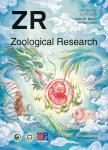Chronic lithium treatment ameliorates ketamine-induced mania-like behavior via the PI3K-AKT signaling pathway
Chronic lithium treatment ameliorates ketamine-induced mania-like behavior via the PI3K-AKT signaling pathway作者机构:Psychiatric Laboratory and Mental Health CenterWest China Hospital of Sichuan UniversityChengduSichuan 610041China Affiliated Mental Health Center&Hangzhou Seventh People’s HospitalZhejiang University School of MedicineHangzhouZhejiang 310013China NHC and CAMS Key Laboratory of Medical NeurobiologyMOE Frontier Science Center for Brain Science and Brain-machine IntegrationSchool of Brain Science and Brain MedicineZhejiang UniversityHangzhouZhejiang 310014China Guangdong-Hong Kong-Macao Greater Bay Area Center for Brain Science and Brain-Inspired IntelligenceGuangzhouGuangdong 510799China
出 版 物:《Zoological Research》 (动物学研究(英文))
年 卷 期:2022年第43卷第6期
页 面:989-1004页
核心收录:
学科分类:0710[理学-生物学] 1007[医学-药学(可授医学、理学学位)] 1006[医学-中西医结合] 100706[医学-药理学] 100602[医学-中西医结合临床] 10[医学]
基 金:supported by the Key Project of the National Natural Science Foundation of China(81920108018 to T.L.and P.S.) Ministry of Science and Technology of the People’s Republic of China(2022ZD0205200) Natural Science Foundation of Sichuan Province(2022NSFSC1607) Key R&D Program of Zhejiang(2022C03096 to T.L.) Special Foundation for Brain Research from Science and Technology Program of Guangdong(2018B030334001) Project for Hangzhou Medical Disciplines of Excellence&Key Project for Hangzhou Medical Disciplines
主 题:Lithium Ketamine Medial prefrontal cortex Bipolar disorder Manic PI3K-AKT signaling pathway
摘 要:Ketamine, a rapid-acting antidepressant drug, has been used to treat major depressive disorder and bipolar disorder(BD). Recent studies have shown that ketamine may increase the potential risk of treatment-induced mania in patients. Ketamine has also been applied to establish animal models of mania. At present, however, the underlying mechanism is still unclear. In the current study, we found that chronic lithium exposure attenuated ketamine-induced mania-like behavior and c-Fos expression in the medial prefrontal cortex(mPFC) of adult male mice. Transcriptome sequencing was performed to determine the effect of lithium administration on the transcriptome of the PFC in ketamine-treated mice, showing inactivation of the phosphoinositide 3-kinase(PI3K)-protein kinase B(AKT) signaling pathway. Pharmacological inhibition of AKT signaling by MK2206(40 mg/kg), a selective AKT inhibitor, reversed ketamine-induced ***, selective knockdown of AKT via AAVAKT-sh RNA-EGFP in the mPFC also reversed ketamine-induced mania-like behavior. Importantly,pharmacological activation of AKT signaling by SC79(40 mg/kg), an AKT activator, contributed to mania in low-dose ketamine-treated mice. Inhibition of PI3K signaling by LY294002(25 mg/kg), a specific PI3K inhibitor, reversed the mania-like behavior in ketamine-treated mice. However, pharmacological inhibition of mammalian target of rapamycin(mTOR)signaling with rapamycin(10 mg/kg), a specific mTOR inhibitor, had no effect on ketamine-induced mania-like behavior. These results suggest that chronic lithium treatment ameliorates ketamine-induced mania-like behavior via the PI3K-AKT signaling pathway, which may be a novel target for the development of BD treatment.



